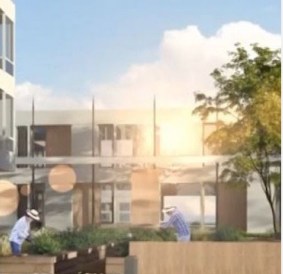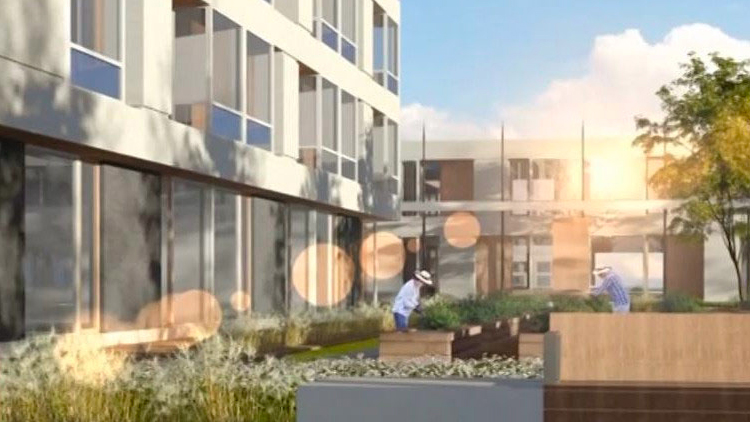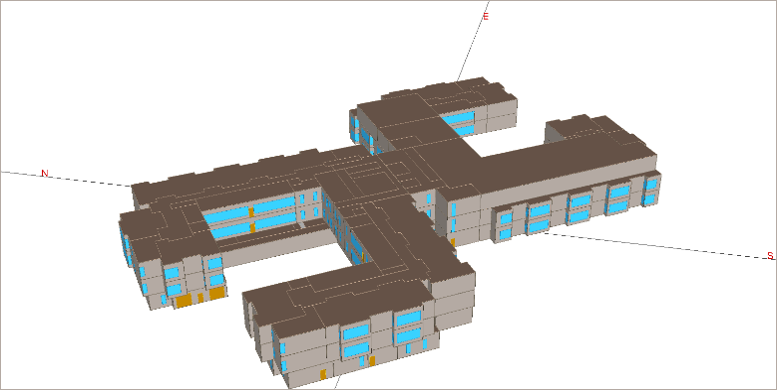Continue reading




| Method used | Number of buildings | Number of beds |
| Traditional method by master team | 8 | 672 |
| Traditional method | 25 | 1,836 |
| CCF – Conception/Construction/Financing | 13 | 960 |


| Category | Choice |
| Lighting | Entirely LED lighting |
| Domestic hot water |
|
| Ventilation |
|
| Heating* |
|
| Chilling |
|
In the first drafts, an all-electric strategy was envisaged, but given the requirement for boiler redundancy in case of power outages, huge capacity generators would have been required.
Using gas-fired boilers/water heaters allows an appreciable reduction in the capacity of the generators and an average investment saving of about $4 M compared with the use of 100% electric boilers.
Besides considerably reducing capital costs, natural gas boilers also allow savings in the operating costs of managing electricity peaks.
When natural gas is available, gas-fired boilers/water heaters are used to manage electricity peaks, respecting criteria 2 & 3 of CCAP 2020.
Peak management allows a quite significant energy saving of about $5/m2, which translates into an average annual saving of $26,000 for a 48-bed MDA, $40,000 for a 72-bed MDA, and $52,000 for a 96-bed MDA. The saving comes from reducing the monthly peak and removing the applicability of the penalty imposed by Rate M.
Note: This peak management strategy is not used for buildings that use propane because of the high costs of propane compared with natural gas.
| Technology | Decisions |
| Geothermal | Too many risks are associated with the non-repeatability of the solution, which is dependent on worksite conditions and soil typologies. |
| Aerothermal | Impracticable in a cost-management context. |
| Heat recovery from chillers | Little potential, given the high heat recovery from exhaust air by the heat exchangers, as well as the shape of the buildings. |
According to the concept teams, certain variabilities can be observed on the various projects, the most important being:

Typical hybrid – Lebourneuf 96 beds -eQuest
| Requirements | Objectives | Results or Proposal |
| 1. Optimize energy efficiency | 20% more efficient than CNEB2011 | 31% more efficient than CNEB2011
Sources of savings:
See below Table 4 |
| 2. Reduce GHGs | Respect criteria 2 & 3 of CCAP 2020 | See below Table 5 |
| 3. Obtain LEEDv4 certification - Healthcare | Between 10 and 17 points | 17 points LEED v4 – Energy and atmosphere |
| 4. Respect CSAZ317.2-2015 Standard | Respect the particular requirements of healthcare establishments |
|
| Proposal | CNEB2011 | |||||
| MJ | MJ | |||||
| Electricity | Natural gas | Total | Electricity | Natural gas | Total | |
| Lighting | 883,843 | - | 883,843 | 2,185,425 | - | 2,185,425 |
| Various equipment | 1,966,040 | - | 1,966,040 | 1,966,040 | - | 1,966,040 |
| Kitchen equipment | 49,926 | - | 49,926 | 49,926 | - | 49,926 |
| Heating | 2,690,698 | 1,001,430 | 3,692,127 | 4,369,629 | 2,635,850 | 7,005,478 |
| Air-conditioning | 883,875 | - | 883,875 | 583,631 | - | 583,631 |
| Pumps | 457,638 | - | 457,638 | 33,084 | - | 33,084 |
| Heat release | - | - | - | - | ||
| Humidification | 367,299 | - | 367,299 | 2,462,185 | - | 2,462,185 |
| Ventilation | 2,582,497 | - | 2,582,497 | 1,247,302 | - | 1,247,302 |
| Domestic hot water | 732,307 | 732,307 | - | 1,392,826 | 1,392,826 | |
| TOTAL | 9,881,815 | 1,733,736 | 11,615,552 | 12,897,222 | 4,028,676 | 16,925,898 |
| Energy savings | 31% | |||||
| COSTS | $202,884 | $19,182 | $222,066 | $334,888 | $41,793 | $376,681 |
| Cost savings | 41% | |||||
| Statistics | Proposal | CNEB2011 |
| Surface area - m2 | 10,493 | |
| GJ/m2 | 1,11 | 1,61 |
| kWh/pi2 | 29,22 | 42,58 |
| Average cost - $/kWh | 0,074 | 0,093 |
| Average cost - $/m3 | 0,42 | 0,39 |
Énergir participated in the MDA project by supporting the master team in seeking solutions that optimally meet requirements while maximizing the amount of financial assistance available. This collaboration led, in particular, to grants averaging $70,000 for 96-bed MDAs under the New efficient construction program.
Given a context that called for reconciling energy savings and costs, reducing GHG, and ensuring the comfort of the users, the energy mix (the right energy in the right place at the right time) turned out to be the most viable solution for the seniors’ homes. While the choice of technologies may vary according to the local setting, the combined and complementary use of natural gas and electricity will enable delivering MDAs that comply in all respects to government requirements. To date, 34 of the 46 MDAs announced are already under construction, and the large majority should be delivered by Fall 2022.

Continue reading
© 2024, Énergir